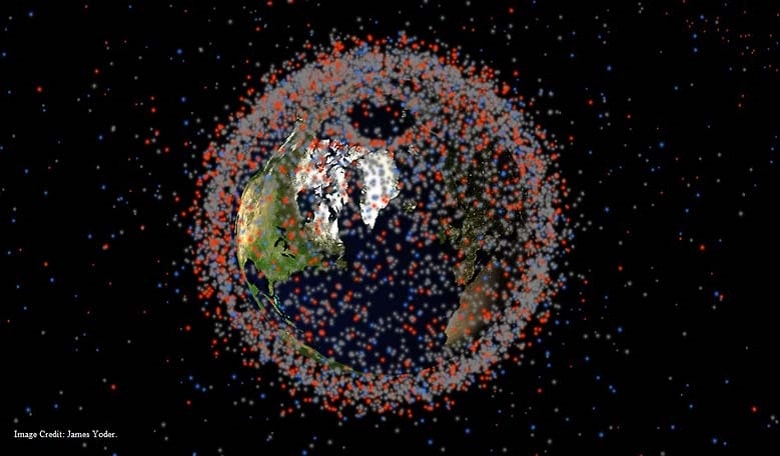Thanks to an engineering student at the University of Texas in Austin, we can now see just how crowded the orbit around Earth has become.
Stuff in Space, created by student James Yoder, tracks daily data from Space-Track.org and tracks the positions of objects by employing the Satellite Javascript Library.
Even a relative space novice, someone who doesn’t know what the difference between Glonass and GPS is, is immediately struck by just how things have gotten around Earth after decades of human space activity.
As space launches are set to become cheaper (which they are likely to do, in spite of recent high-profile launch failures that affected SpaceX, the Russian Progress, and so on), we can expect crowding and clutter to become bigger and bigger problems.
The current estimate is that there are around 21,000 pieces of clutter larger than 10 cm in size in orbit around Earth.
Most of this clutter is in low orbit. NASA already considers the issue of space junk as a growing threat to human activities in space.
As ROOM authors Mark Simpson and Laura Delgado Lopez wrote earlier this year – clutter in space presents both a risk and a business opportunity. As the problem continues to grow, business will be forced to innovate as a means of tackling it.
Yet as Ben Greene also notes, international cooperation is essential for tackling space junk. Orbits around Earth are used by the global community and, therefore, are a collective problem, one that cannot be solved by a single nation’s initiative.
Although it is not a partisan website that takes sides in the debate on clutter, Stuff in Space is a welcome addition to the global debate surrounding space junk simply because of how well designed it is. An attractive, dynamic interface goes a long way toward presenting the issue of crowding and clutter.
It may not be particularly fair, but the “sexier” an issue is, the more attention it attracts. Stuff in Space is a good example of how the combination of knowledge and sleekness can be used to highlight a growing problem.











